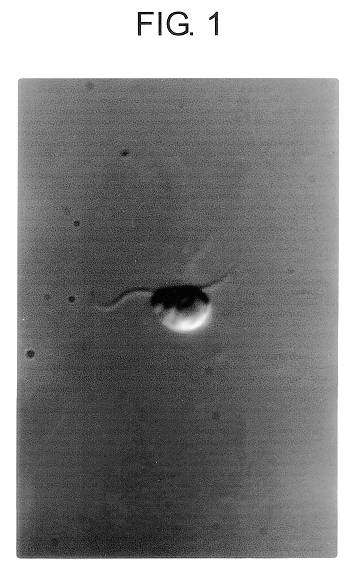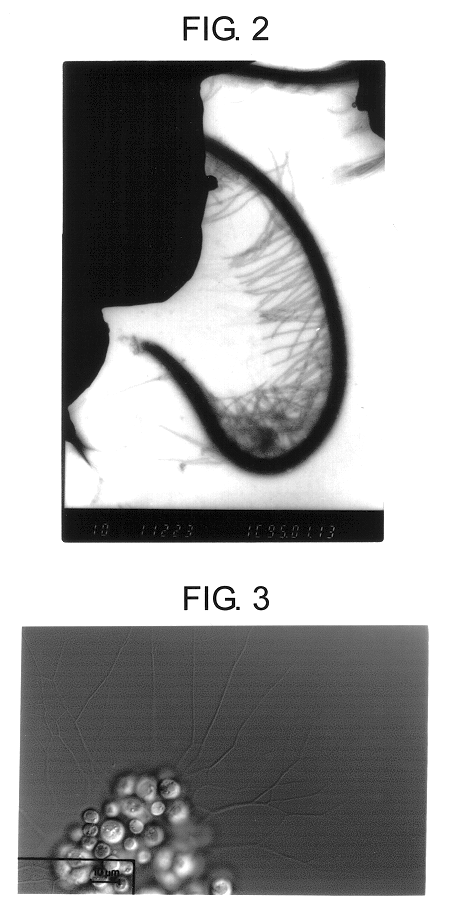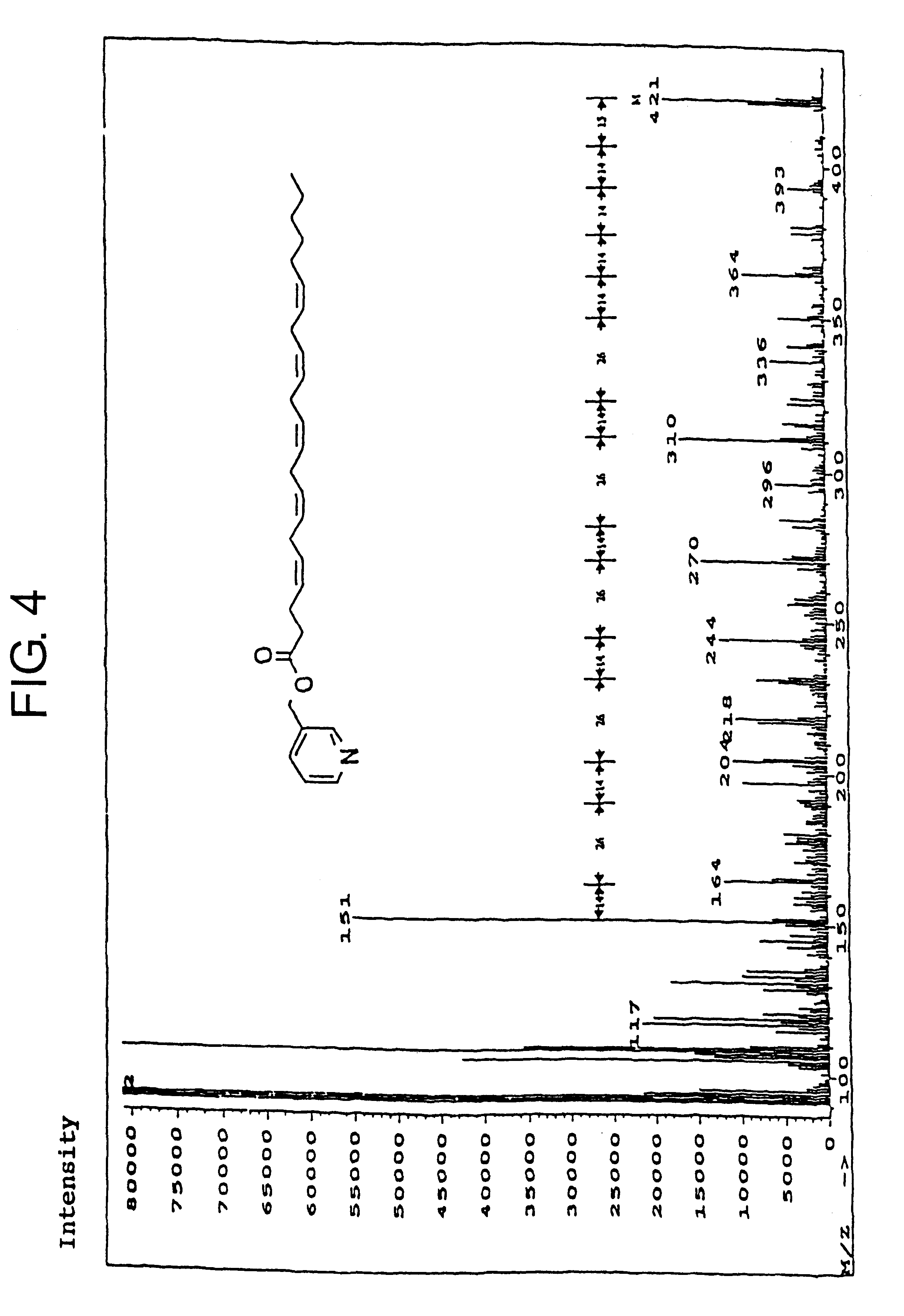Microorganisms capable of producing highly unsaturated fatty acids and process for producing highly unsaturated fatty acids by using the microorganisms
a technology of unsaturated fatty acids and microorganisms, which is applied in the direction of fatty acid chemical modification, microcapsules, enzymology, etc., can solve the problems of inability to maintain a stable source of fish oil, inability to efficiently isolate and/or concentrate the same, offensive odor inherent in fish oil, etc., to increase the growth rate and yield of cell bodies, increase the yield of dha and dpa, and increase the growth rate rate of cell growth
- Summary
- Abstract
- Description
- Claims
- Application Information
AI Technical Summary
Benefits of technology
Problems solved by technology
Method used
Image
Examples
example 1
Production of Fat Using the Schizochytrium Genus SR21 Strain (1)
A medium was prepared by charging 1 L of 50% concentration of artificial sea water (trophic marine) into a flask and then adding a carbon source (glucose or glycerol) and a nitrogen source (corn steep liquor; hereinafter, also abbreviated to "CSL") in the amount shown in Table 2. The medium was inoculated with the Schizochytrium genus SR21 strain and shaking culture was carried out at 26.degree. C. for 5 days.
Next, 2 ml portion of the resulting culture was taken and cell bodies were collected by centrifugation. The cell bodies were washed and dried in an oven at 110.degree. C. for 5 hours to obtain dried cell bodies. The dried cell bodies were weighed to determine the amount of cell bodies per liter of medium. The results are shown in Table 2.
Extraction of the fat and preparation of fatty acid methyl esters were then carried out directly from the dried cell bodies according to a conventional method. Then, the dried cell...
example 2
Production of Fat Using the Schizochytrium Genus SR21 Strain (2)
A medium was prepared by charging 1 L of 50% concentration of artificial sea water, 60 g of glucose as a carbon source, 4.0 g of potassium dihydrogen phosphate, 1.0 g of yeast extract and 1.0 g of corn steep liquor as an organic nitrogen source into a flask, and also adding ammonium nitrate as an inorganic nitrogen source in the amount shown in Table 3. The medium was inoculated with the Schizochytrium genus SR21 strain and shaking culture was carried out at 25.degree. C. for 4 days.
After the cultivation, the amount of cell bodies per liter of medium, the total amount of fatty acids per liter of medium, the percent content of fatty acids per dried cell bodies, the percent content of DHA in total fatty acids, and the amount of DHA per liter of medium were determined in a similar manner to that described in Example 1. These results are shown in Table 3.
From these results, it was found that the SR21 strain can rate well ev...
example 3
Production of Fat Using the Schizochytrium Genus SR21 Strain (3)
Cultivation was carried out in a jar fermenter (fermenter volume: 5 L, amount of medium: 3 L), using the medium (A) composed of 60 g of glucose, 20 g of polypeptone, 10 g of yeast extract and 1 L of 50% concentration of artificial sea water or the medium (B) composed of 90 g of glucose, 10 g of polypeptone, 10 g of corn steep liquor and 1 L of 50% concentration of artificial sea water. The cultivation was carried but at the culturing temperature of 25.degree. C., at the aeration rate of 0.5 vvm, and at the agitation rate of 200 rpm.
After the cultivation, the cell bodies were collected by centrifugation and freeze-dried, and the amount of cell bodies per liter of medium was determined by weighing. The results are shown in Table 4.
Next, destruction of the cell bodies and extraction of a fat were carried out by adding a chloroform / methanol (2:1: v / v) mixture to the dried cell bodies and homogenizing the resulting mixture i...
PUM
| Property | Measurement | Unit |
|---|---|---|
| Fraction | aaaaa | aaaaa |
| Fraction | aaaaa | aaaaa |
| Fraction | aaaaa | aaaaa |
Abstract
Description
Claims
Application Information
 Login to View More
Login to View More - R&D
- Intellectual Property
- Life Sciences
- Materials
- Tech Scout
- Unparalleled Data Quality
- Higher Quality Content
- 60% Fewer Hallucinations
Browse by: Latest US Patents, China's latest patents, Technical Efficacy Thesaurus, Application Domain, Technology Topic, Popular Technical Reports.
© 2025 PatSnap. All rights reserved.Legal|Privacy policy|Modern Slavery Act Transparency Statement|Sitemap|About US| Contact US: help@patsnap.com



